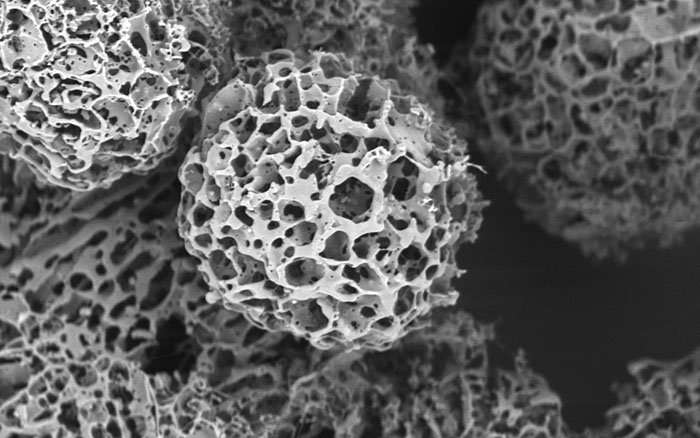Biomaterials and regenerative medicine

We use technology to support the body’s own healing powers and improve a patient’s recovery from injury or disease.
Our research uses biomaterials, stem cell technologies and medical device design to restore damaged or missing tissue in the human body and to grow model tissues outside the body. We work with engineers, surgeons, cell biologists and mathematicians to deeply understand the 3D microenvironments that tissues require to grow and function.
Applications include assisting recovery from cardiovascular disease, helping cancer patients regenerate their own tissue after surgery, resurfacing joints affected by arthritis and designing antimicrobial agents that protect against infections.
Our focus
- Development of biomimetic materials for wound and tissue regeneration applications
- Production of porous polymers and hydrogels
- Mechanobiology
- Biofabrication for bone and cartilage replacement, soft tissue repair and wound healing
- Magnetically regulated tissue engineering
- Molecular mechanisms behind wound healing and tissue regeneration
- Cardiovascular devices
- Neural tissue engineering and neuro prostheses
- Understanding dementia using novel technologies to study brain organoids
- Materials to enable production of high-quality stem cells at a large scale
- Antimicrobial nanoparticles, coatings and composites to fight drug-resistant infections
Our capabilities
- Nanotechnology and microfabrication
- Design and production of biomaterial scaffolds, devices and tissue constructs
- Stem cell culture and bioreactors
- 3D bioprinting and biofabrication
- Physical, chemical and biological characterisation of tissues, biomaterials and their interactions
- Mechanical testing of biological materials across scales, from single cell, to tissue and organ
- Development and characterisation of antimicrobial materials and their mechanisms of action
Our partners
- Anatomics
- Centre for Eye Research Australia
- LBT Innovation
- ReNerve
- Royal Adelaide Hospital, South Australia
- South Australian Institute of Ophthalmology
- St Vincent’s Institute of Medical Research
Case studies
Engineering magnetics to grow human tissue
Tissue engineering can restore damaged or lost tissue in the human body, and biomedical engineers are working to one day scale up the technology to regenerate entire organs.
Regeneration chamber provides space for natural tissue regrowth
Biomolecular engineers are developing new techniques to help patients recovering from breast cancer regenerate their own tissue after surgery, to improve their long-term recovery.
Enlisting nanoparticles in the fight against superbugs
As antibiotics become less and less effective, researchers are turning to new ways to defeat drug-resistant bacteria like Golden Staph.
Cranial bone implants
A technique to make polymer-based skull implants more bone-like in their structure has been developed to improve outcomes for patients relying on implants to repair cranial injuries.
Seeing inside arthritis
Mechanobiology brings together engineering, biology, and physics – and this technology could help predict your risk of developing a musculoskeletal condition.